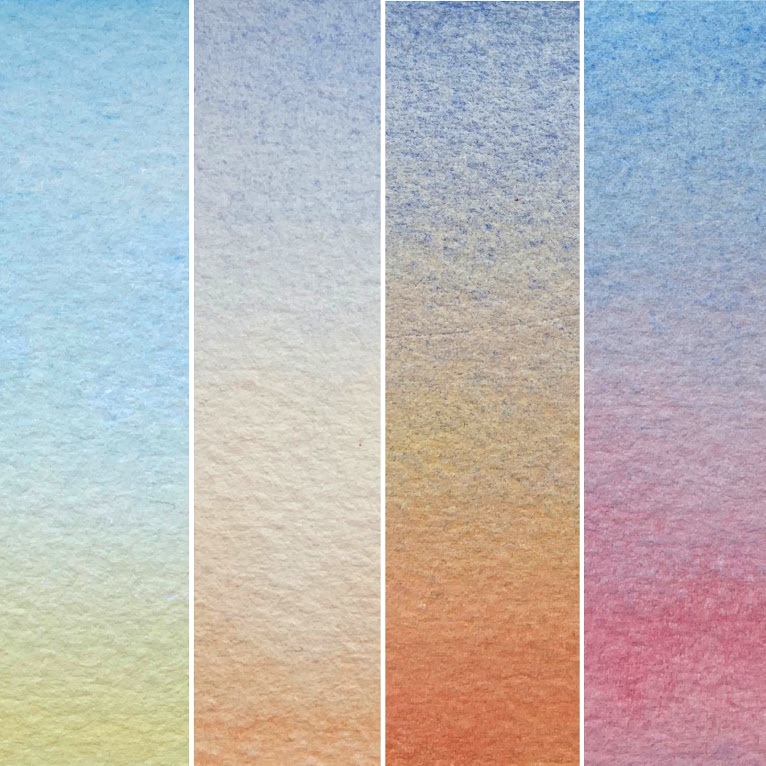How do you describe the color of the sky?
This summer my creative focus has been on color study, observing and learning descriptors, qualities and names. Many of the techniques were based off of a wonderful older book titled Watercolor Technique by watercolorist Rex Brandt. The introduction provided such an accurate and beautiful description of painting in the medium that I knew this was a man to learn from.
I ordered a copy of this man’s writings for my personal library simply because of this one quote.
The artist’s feelings and thoughts cannot be readjusted, buried or hidden. (Rex Brandt)
Paper and water carry the painter’s emotion through the tiniest bit of pigment. Yet the choice of pigment matters.
These included studies in color, transparency, layers and value. I played in washes and observations. I visited museums and spent time outdoors soaking in hues throughout the day.
Versions of color studies can be seen within the newly opened Bauhaus Museum in Weimar. People love a color wheel. My appreciation for color studies began last summer with a visit to the Cooper Hewitt’s exhibition, “Saturation:The Allure of Science and Color”. (Also, reason number 1000 why I believe education should be pursuing STEAM and not STEM programing.)
As Fall approaches, I will be revisiting my summer explorations.
My sky studies were my favorite portion of this summer color study. I’m thinking of sharing these studies through a type of watercolor challenge series on Instagram, because they were so fun.
Which leaves me with how do you describe the color of the sky?
I’m still not sure I can describe the color accurately by pigment color. You?























